Poll: Learning difficulties
In his fictional town of Lake Wobegon, Garrison Keillor poked fun at Minnesota’s collective sense of superiority when he wrote “all the women are strong, all the men are good-looking, and all the children are above average. the latest Thinking Minnesota Poll, Minnesotans no longer feel all the children are above average.” Almost half of the respondents gave our public schools a grade of C, D or F, a sharp decline in scoring since we first asked the question in March 2020. It’s probably a good thing we didn’t ask if Minnesotans still think the women are strong and the men good-looking.
The poll was conducted by Meeting Street Insights, a nationally recognized polling operation based in Charleston, S.C. Using a mix of cell phones and landline phones, the company interviewed 500 registered voters across Minnesota from May 10-12, 2022. The margin of error is +-4.38 percent.
After almost two years of school shutdowns, distance learning, and the social isolation of our youngest learners, Minnesotans are rethinking their support of public schools. The number of respondents who gave public schools an A or B dropped 10 percent since March 2020, and those who gave schools a D or F almost doubled. While Minnesotans still give their local schools higher marks than the state, the number giving local schools an A or B also dropped 10 percent since 2020.
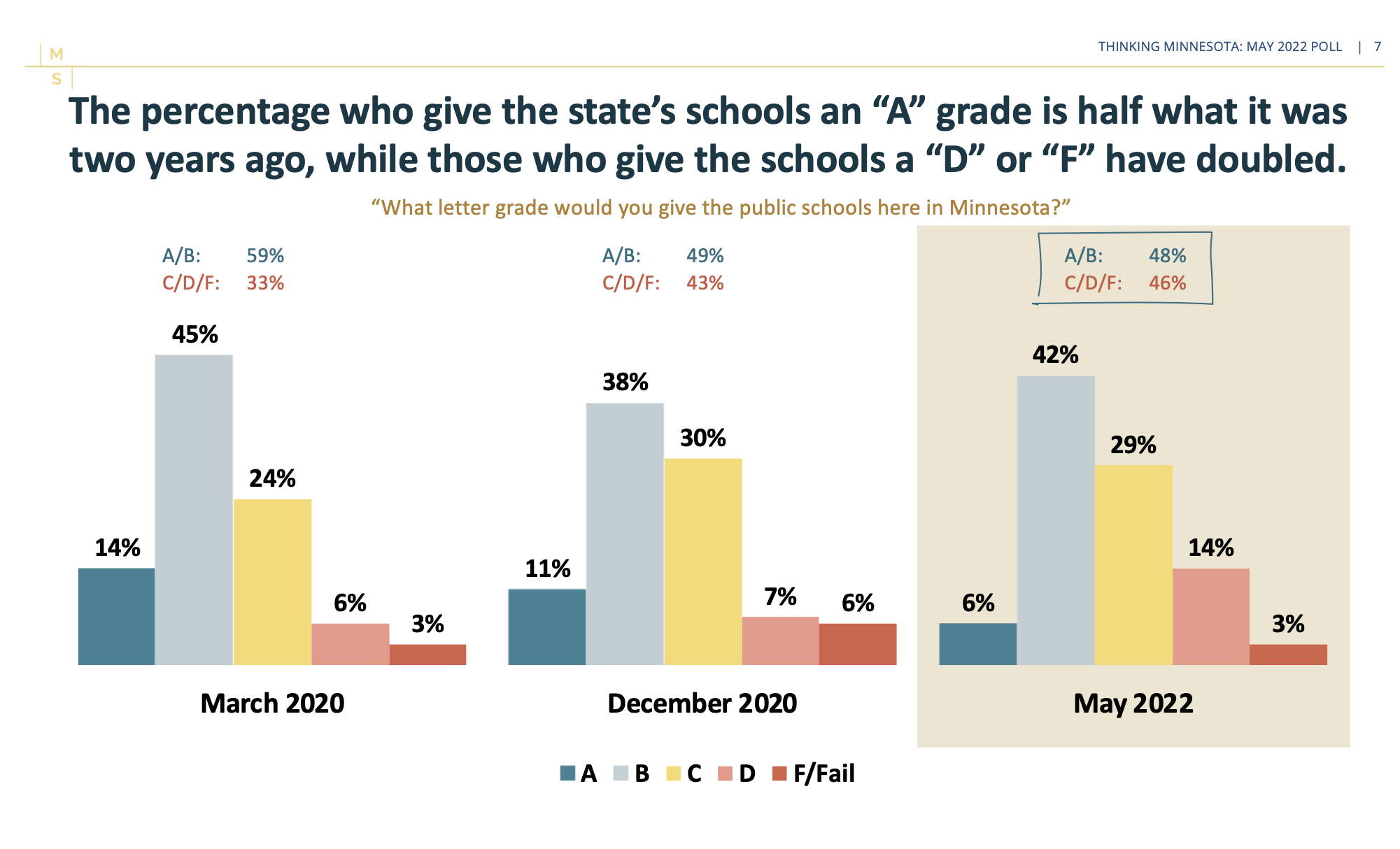
“It’s very telling that support for local schools dropped so dramatically in such a short time,” says John Hinderaker, president of Center of the American Experiment. “There is no stronger indictment of shutdown policies than Minnesota parents losing faith in their local public schools.”
According to the poll, the lost faith in schools is rooted in respondents’ views of how children fared throughout the pandemic. Seventy-nine percent of Minnesotans and 87 percent of parents believe that school closures in Minnesota had a negative effect on children. Seventy-four percent of respondents and 76 percent of parents are worried that children have fallen behind because of COVID-19 education policies. And 76 percent of Minnesotans and 80 percent of parents are worried about the mental health of children as a result of COVID-19 education policies.
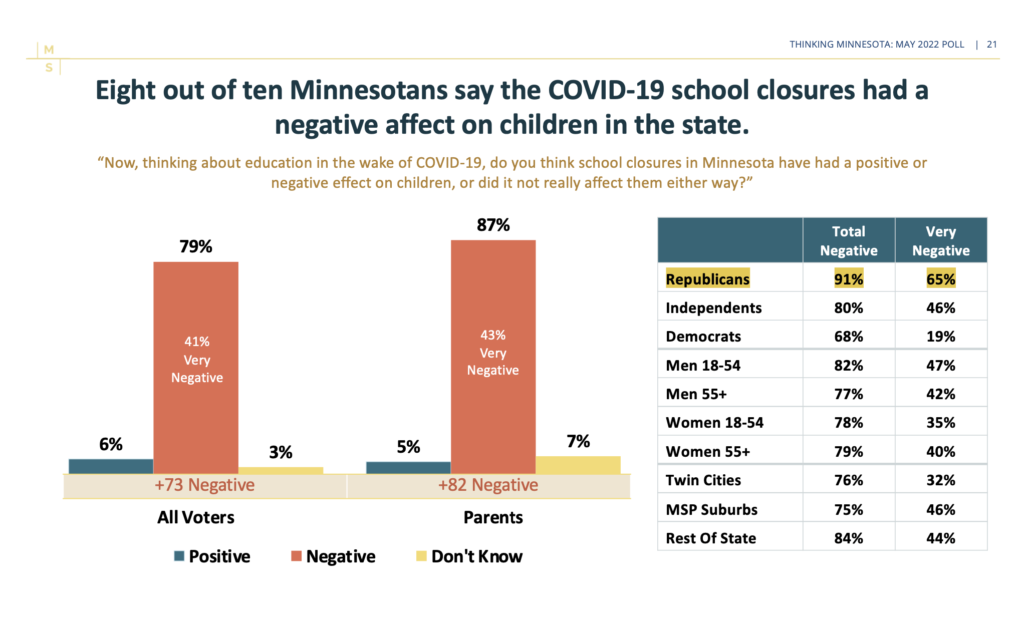
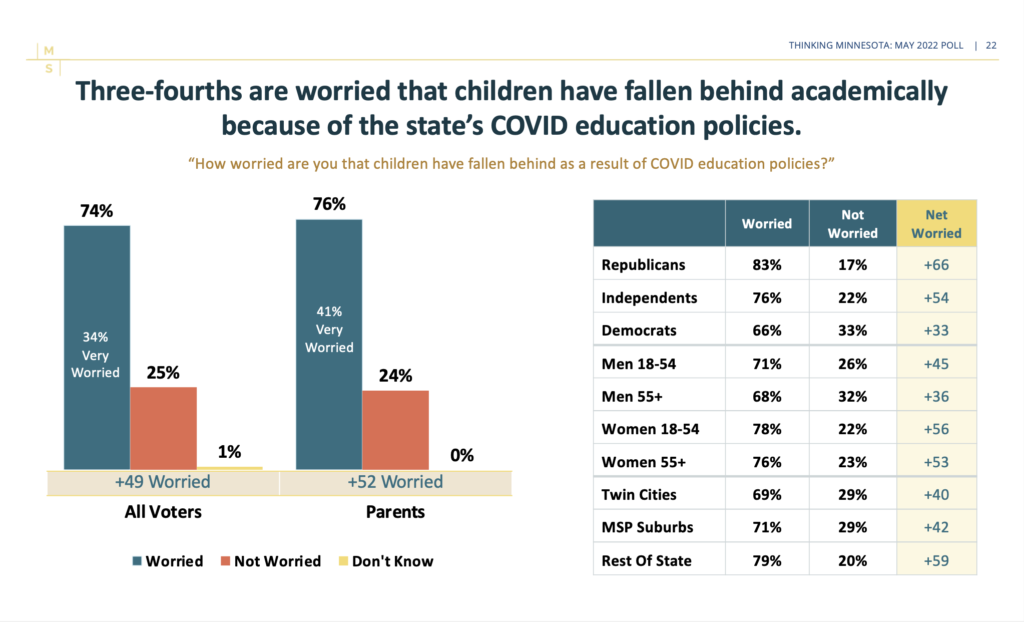
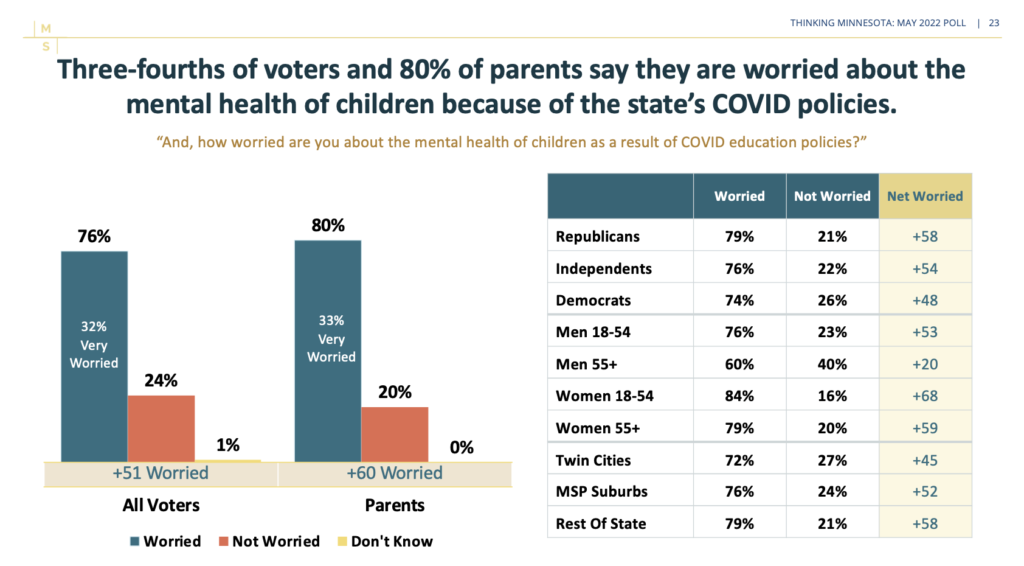
Gov. Tim Walz shut down schools at the onset of the pandemic in March 2020 and set up a complicated (and impossible to meet) metric for schools to open the following fall. Most Minnesota public schools did not reopen until the spring of 2021, even though COVID-19 posed very little risk to school-aged children.
Minnesotans are also concerned about the safety of teachers and students with 47 percent saying they are “worried about the safety of Minnesota public schools.”
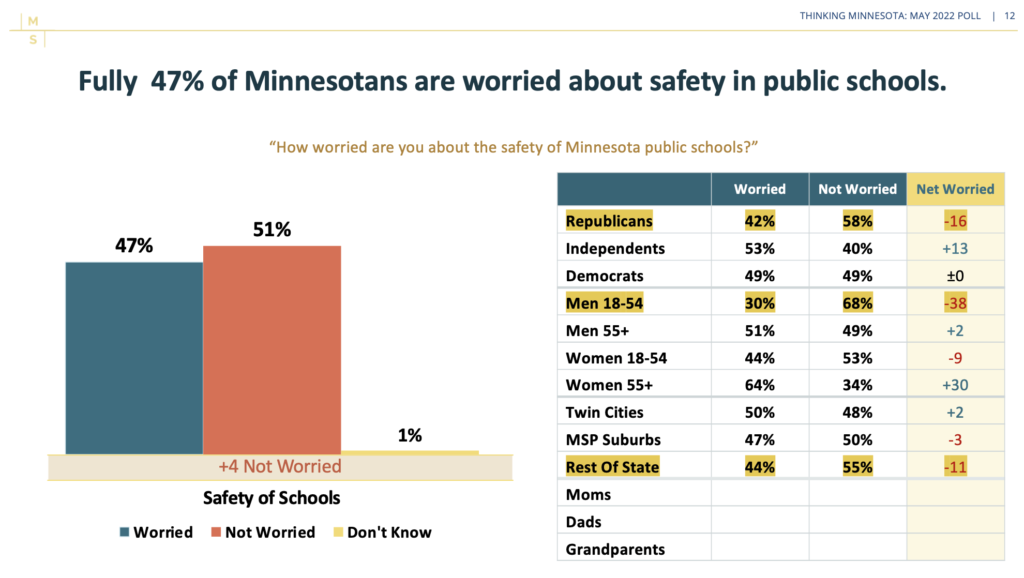
What do Minnesotans expect from their public school system? For one, they want schools to focus on academic excellence. An overwhelming plurality (41 percent) of respondents chose academic excellence when asked to choose the top priority for local school leadership. The next closest answers were “supporting teachers” at 17 percent and “student mental health” at 13 percent. No other answer received more than 9 percent.
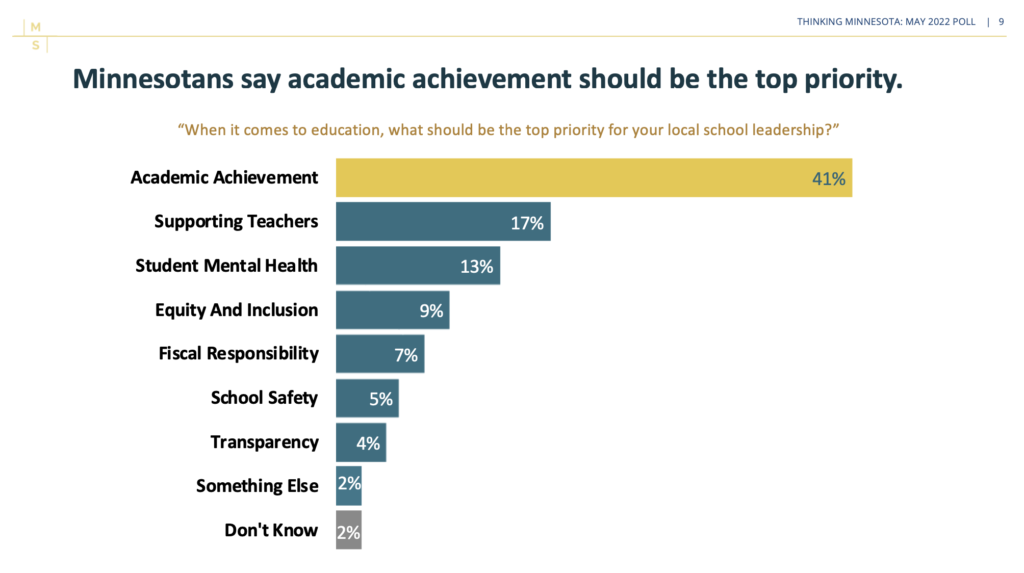
“Minnesotans desperately want our schools to focus on academic excellence, not chasing the latest fads like Critical Race Theory or equity and inclusion,” adds Hinderaker. “School board members and superintendents need to listen more to the customers of public education: parents and taxpayers.”
When it comes to listening to parents, the overwhelming majority (93 percent) believe school board meetings should be open for public comment. Many school boards in Minnesota have joined a disturbing trend of limiting public comment from parents and taxpayers at their school board meetings. Out-of-touch school boards and superintendents frequently remind the public there is no legal obligation for board meetings to include a public forum option, but our poll shows the people want to be heard.
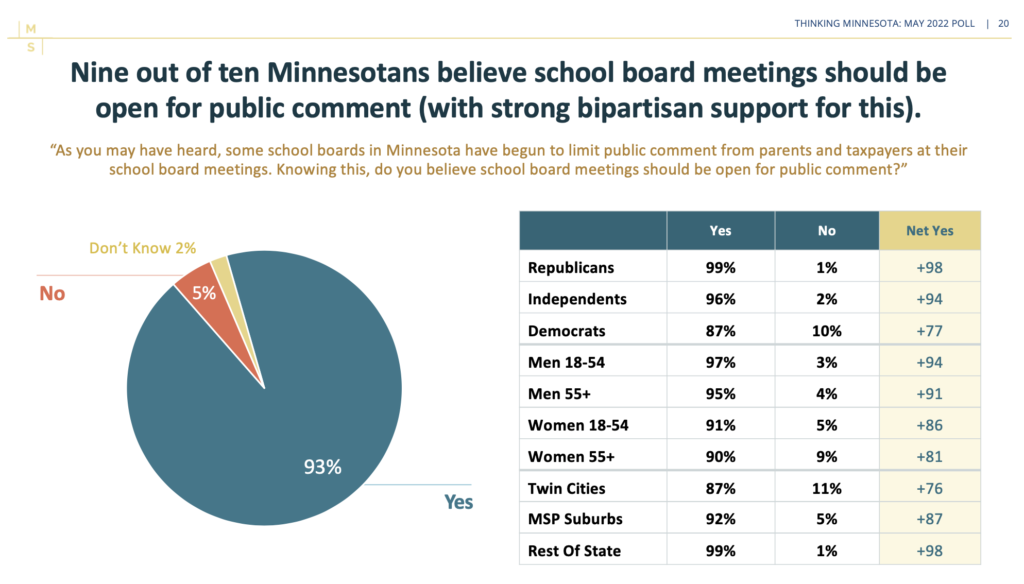
One issue driving the need for public comment at school board meetings the last few years is Critical Race Theory (CRT). Awareness of CRT increased from 58 percent in September 2021 to 75 percent in the current Thinking Minnesota Poll. That awareness is the likely result of American Experiment’s 22-city tour exposing the pervasiveness of CRT in Minnesota schools, especially in the draft social studies standards currently under review.
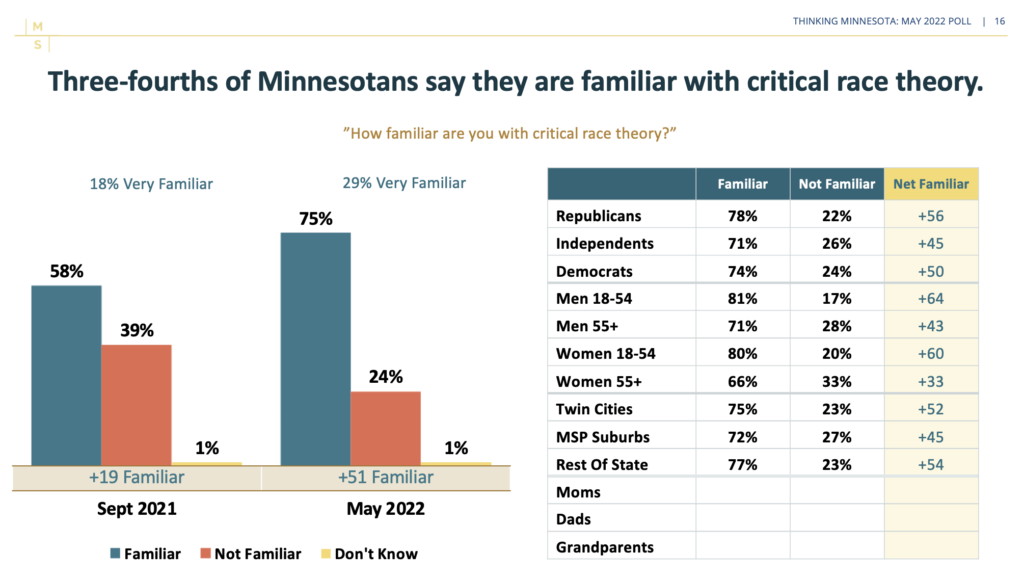
As was the case last year, the more people know about CRT, the more they oppose it. A plurality of respondents (38 percent) now oppose teaching CRT in public schools, up from 34 percent last year. The issue has crystallized along partisan lines with only 5 percent of Republicans supporting it and only 7 percent of Democrats in opposition.
All of these important issues come down to one really important question: Who should have the biggest voice about what is being taught in the classroom? We asked respondents to choose between parents, because it involves their children, or teachers, because they have more training and experience.
Thinking Minnesota respondents chose parents over teachers 53 percent to 44 percent. Once again, this issue broke down along party identification. Democrats were much more likely to choose teachers over parents (73 percent-25 percent) while Republicans chose parents over teachers (85 percent-14 percent). The issue of who’s in control of education played a central role in the 2021 Virginia governor’s race. Many believe Democratic Gov. Terry McAuliffe’s statement that “parents shouldn’t be telling schools what they should teach” cost him the election to Republican Glenn Youngkin.

“The heart and soul of our education system is up for grabs in this fall’s election, from governor all the way down to school board,” says Hinderaker. “Minnesotans are telling us that candidates who listen and respond to parents will be rewarded in November.”
A return to Keillor’s “above average children” and to revive confidence in our public schools depends on how well Minnesota leaders listen and respond to the results of this poll.